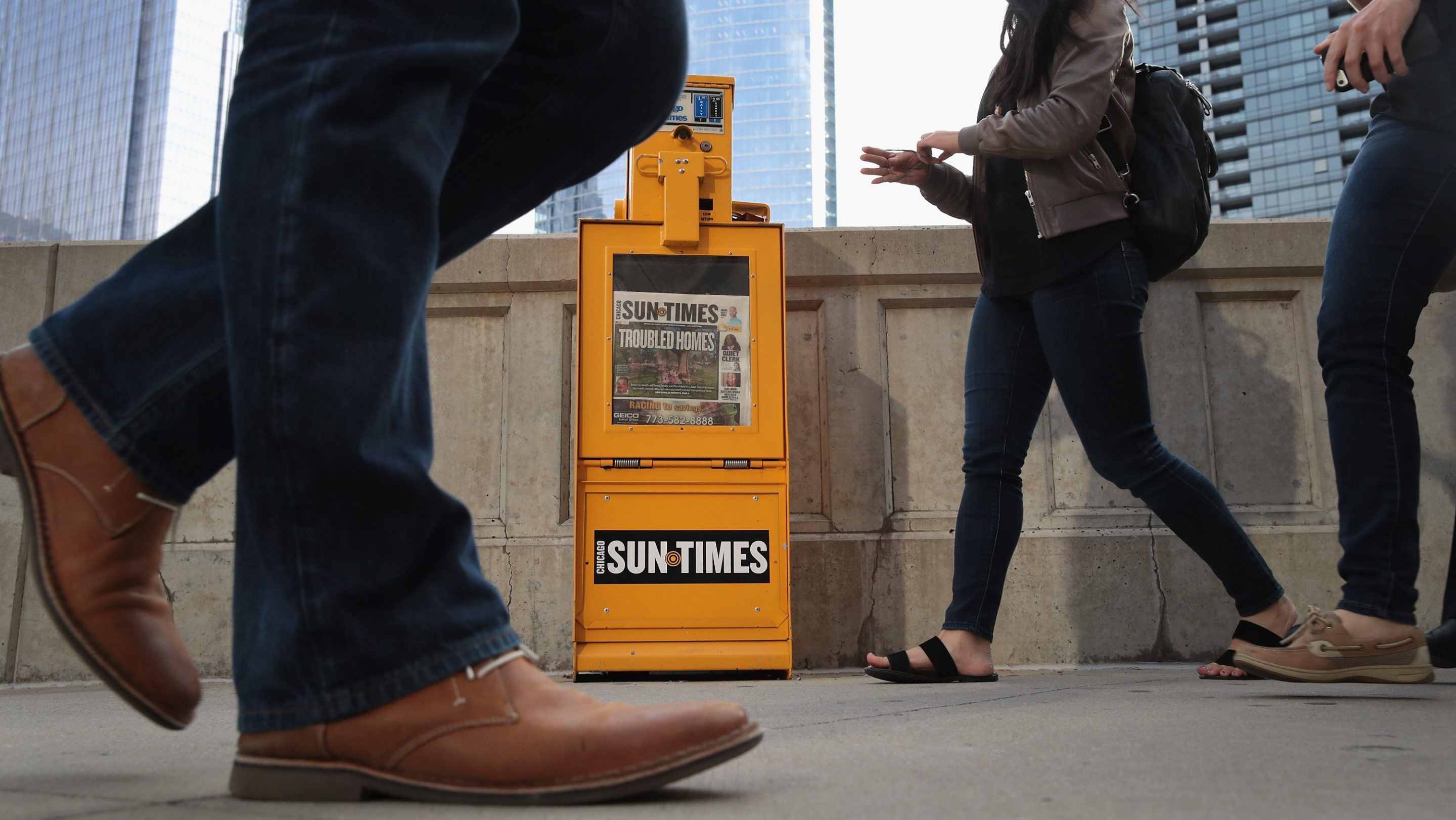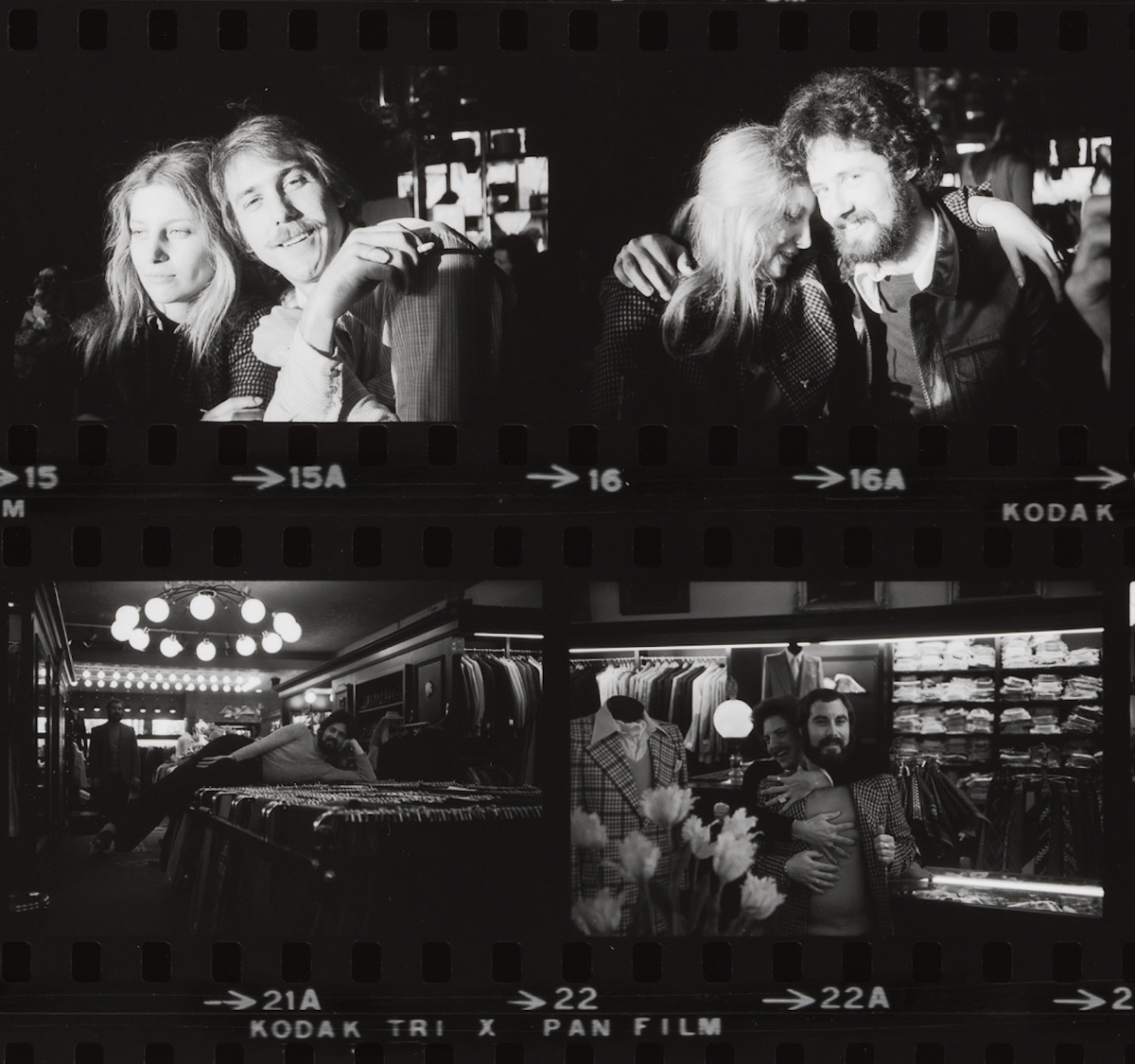The saddest stories in local news are the ones where the body has been left to sit for a while. I worked in local news for the first decade of my journalism career, and that often meant writing about people who died. Sometimes people died after a long and glorious life; all too often, they died far too young, and in easily avoidable tragedies. But every now and then a news release would come across my desk from local law enforcement asking for help identifying a body that they had found, and along with it a slew of horrible questions: How long had this person been dead? Did anyone notice they were gone? Death comes for all of us, but not all deaths are equal. Some are more cruel than others.
I remembered that feeling Tuesday, when news broke that the Chicago Sun-Times and The Philadelphia Inquirer had both published a special section—HEAT INDEX: Your Best of Summer Guide—whose recommended summer reading list included a bunch of made-up books by real authors, the names and titles thrown together seemingly at random. It got worse from there. When reporters from 404 Media and later The Atlantic contacted the person who wrote the summer book list, he explained that he wrote it—or, anyway, put it together—using ChatGPT, and then had just forgotten to double-check the work before submitting it to the company that had commissioned it, King Features, a division of newspaper publisher Hearst. The words, seemingly still unread by anyone who'd notice or care that they were mostly nonsense, then got shoveled along. Hearst packaged the words, then licensed the section to various newspapers, which duly printed it out and included it in their Sunday editions. If anyone did notice the many mistakes along the way, they sure didn't stop them. No surprise, a lot of writers and readers got very mad about this online.
The union that represents Sun-Times editorial workers, the Chicago Sun-Times News Guild, said it was looking into what happened, as the section "is not editorial content and was not created by, or approved by, the Sun-Times newsroom." Before the day's end, the Sun-Times itself put out a statement about the special section, saying the newspaper included the special section as part of an effort to include "national and broader coverage beyond our primary focus" and that, to do so, the publication has "historically relied on content partners for this information." (The Inquirer has not issued a statement yet.)
That is a lot of words to explain that a good chunk of what's in a newspaper, especially words that aren't about that paper's primary coverage area, actually comes from other sources—from the wire copy filling the front section with stories from around the world, to the syndicated comics, to the syndicated crossword, to the magazine inside the Sunday edition. Anyone who has held and flipped through a physical newspaper with any regularity knows this. HEAT INDEX was embarrassing because it was AI-generated dreck, but its presence in the Sunday paper was not all that strange beyond that.
This works because there is an unspoken agreement, in theory, that the stuff coming from outside the paper is still being held to similar standards to the work that newsroom produces. And this is clearly true with, say, the stories produced by the Associated Press. Victor Lim, a spokesman for Chicago Public Media, which owns the Sun-Times, told 404 Media that the section wasn't reviewed before publication because it came from another newspaper publisher.
But a dirty and not-so-hidden secret of local newspapers is that there's also a lot of copy in special sections and inserts, and sometimes even within the newspaper itself, that comes from outside the newsroom and can best described as "meh." It exists because it provides filler—copy, or a passable facsimile of it, available at an extremely low cost, against and around which ads can be sold. Advertisers love a nice, family-friendly themed section like, say, a best of summer guide, because they want to be next to something wholesome. They would certainly like that more than seeing their ad next to a story about sexual abuse in the Catholic church, which was leading the Sun-Times homepage when I looked on Tuesday night. That work is important, and the best argument for paying for a newspaper and giving reporters living wages, but these are hardly the stories advertisers want their product next to.
When newspapers were plump with power, they could tell advertisers to shut up if they complained about that sort of thing. They could be righteous about it, and be both correct and secure, because the paper was one of the biggest advertising vehicles around. That hasn't been true for decades now. Instead, every newspaper without "New York" or "Washington" or "Wall Street" in its name has seen its reporting corps shrink alongside its advertising revenues; there's just enough demand for print advertising that the print product continues to limp along, but everything is getting smaller. The ads need to run alongside journalism, or anyway alongside words, and those words must be generated—er, written—by someone.
Even at the height of their powers, newspapers still had inserts of questionable quality, but daily newspaper readers realized this. Those special sections and inserts just looked different from the editorial product, and were generally labeled as such. The local newsroom didn't produce the coupons or the separate Sunday magazine; the different fonts, non-local bylines, even the different textures of the paper all signaled this. The special sections printed by the Sun-Times and The Inky are also clearly not done by the newsroom. The photos largely lack credit lines, it has that unfamiliar not-quite-the-newspaper font, entire chunks of copy don't have bylines at all. The photos that do have credits are from Unsplash, which provides free photos. Though the final product still blurs the line between editorial and non-editorial—the sections have the newspaper names printed on the bottom, and contain no language making clear that the section was licensed from outside the company—this also wasn't the hardest case to crack if you know what a proper newspaper article looks like. You don't even need to read the AI-generated stories to know as much.
Advertising that looks like but is not editorial product has been around long enough that "advertorial" is an official word in the Merriam-Webster dictionary; the practice has grown to include sponcon (also in the dictionary!) and native advertising. Those phrases all encompass the same idea: Stuff that looks like journalism, and is supposed to seem somewhat like journalism, but which absolutely isn't journalism. The rise of ads (and slop) in that vein isn't a surprise in a world where local journalism is dying, and local journalism has been dying for some time now. As Matt Novak wrote over at Paleofuture back in 2013, "ads that look like news are a lot more profitable than ads that look like ads." Whatever you call this stuff, the main thrust of it remains the same: It is cheaper to produce than actual journalism and likely more profitable for papers to run than actual journalism.
So the sheer glut of non-journalism grows, while the newsrooms that produce journalism shrink, all while fewer and fewer people actually pick up a physical local newspaper. Do you pick up a physical newspaper anymore? Maybe on Sunday. Maybe. But it's more than likely that you get your news online, where the lines between journalism and everything else tend to be much blurrier; if you're like most readers, you might not even read more than a few local news stories at all most days. This is why few people even noticed that HEAT INDEX insert, and why it took two days for anyone to get mad about it. It's harder to tell fake from real when you don't know what real looks like. More to the point, you wouldn't know about the hideously fake AI-generated insert if you never picked up the paper at all.
How this story became a story is just as important as the AI used. A book influencer posted that she got sent a photo of the fake reading list by a friend, who asked her if the books were real because some of the titles sounded exciting. The influencer realized that the books were in fact not real and started posting in her Instagram stories about it on Monday, tagging the Sun-Times. Her stories post then got crossposted to Bluesky on Tuesday, where writers and readers started commenting on it; reporters started reporting it out, and it emerged that The Inquirer had published the section as well. On Tuesday, Jason Koebler of 404 Media published an interview with the book list's writer, Marco Buscaglia; Damon Beres and Charlie Warzel followed suit at The Atlantic. An AI-generated summer reading guide whose recommendations included both fake books and Ian McEwan's 2001 novel Atonement was hitting doors in the Chicago area before dawn on Sunday morning, but almost nobody appears to have gotten mad about it until Tuesday. That means it took about 48 hours for the news that a whole section of AI-generated nonsense was published in two major newspapers to go viral.
As Tuesday wore on, people did get mad. The expected takes came, about how AI as a general rule is bad, and how the rise of AI slop is worse, and how this story highlights the need to save libraries, and to save journalism, and to save what remains of news literacy. All true enough, as it happens, but also insufficient, and late. AI has been infiltrating a lot of news organizations for years now. It's writing local news, sports recaps, and product reviews and recommendations, generally very poorly but not in ways that have impeded its rise. Tuesday's controversy was only the latest step in the decades-long attrition of words written in news organizations by actual news reporters. Perhaps the saddest part of that is this: The licensed special section constituted more than 50 pages; the actual, human-crafted Sunday issue of the Inquirer was 34. The extent to which the fake has literally outpaced the real felt bad, of course, but it also felt familiar—another one of those stories where you are left to wonder how long an unidentified body has been sitting there.






